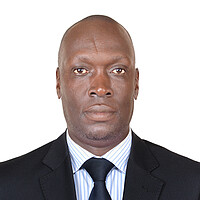Drought-tolerant corn offers Uganda's farmers a lifeline
Loading...
| Kampala and Kabende, Uganda
Josephine Nansamba loves her bazooka.
As a corn farmer in Kabende, Uganda, she knows what it’s like to see her income dry up alongside her crops. But the last few years have been different, she says, thanks to a new variety of drought-tolerant corn known as bazooka. Today, despite drawn-out spells of drought that have claimed her neighbors’ crops, her bazooka is sturdy, tall, and a flourishing green.
Ms. Nansamba’s bazooka is one of several newly developed, hybrid strains of corn sprouting in Ugandan fields. Farmers, researchers, and policymakers in this East African country are increasingly seeking new strains of staple crops in the wake of recent droughts and food shortages here and in the broader Sub Saharan region of Africa.
Climate research suggesting that such problems are likely to intensify has added a new level of urgency to the situation, prompting legislators in October to legalize the use of genetically modified crops after five years of politically charged debate. Researchers hope that legislation will open the door for a whole host of new crops to help bring long-term food security to a region that already struggles with hunger. Beyond drought tolerance, these researchers hope to develop strains that deter pests and offer more nutritional value.
In the meantime, new varieties developed with traditional crossbreeding techniques, like Nansamba’s bazooka, offer a much-needed lifeline.
Corn, or maize, as it is known throughout Africa, is a significant source of revenue for farmers in Uganda. It’s also a dietary staple for the country’s urban poor, school children, and the prison population.
More broadly, 300 million people depend on corn as their main food source in Sub Saharan Africa, a region that has been hit hard by drought and famine in recent months and years. Corn is predominantly grown by small farmers who do not have access to advanced irrigation systems. So these farmers depend on rainwater to nourish this notoriously thirsty crop.
In Uganda, farmers collectively produce nearly 3 million tons of corn annually. In 2016, much of that crop failed following an extended period of drought in April and May. By November of that year, drought-related crop failures had thrust some 1.3 million Ugandans into a food crisis.
In Nansamba’s fields, however, bazooka has flourished. Where others worry their seeds may fail to germinate or produce combs, Nansamba and her husband, Vincent Ssempewa, look forward to their harvest.
“We expect a better harvest,” Mr. Ssempewa says.
Sowing opportunity
The hybrid variety UH 5354, as bazooka is officially known, was bred by National Crops Research Resources Institute (NaCRRI) Namulonge. Nansamba and Ssempewa were some of the first farmers to test out the new strain in Uganda as part of a pilot program. When the company Naseco Seeds canvassed her local area looking for farmers to try out the bazooka, Nansamba says she jumped at the chance.
“They gave me the seedlings to test,” she says. And she has not looked back. After seeing how well the variety performed on the one-hectare field on her homestead, she transitioned nine additional hectares to UH 5354. As a result, she has seen yields more than triple and has been able to harvest her own seeds for the upcoming season.
The increased produce has translated to added income of $180 per hectare (about 2-1/2 acres). With 10 hectares of cropland, her family has climbed well into the middle class in a country where the per capita income is $700 per year.
Ssempewa says the new corn variety has given the family of 10 a lifeline after coffee, another thirsty cash crop, withered during a recent the dry spell.
“It is maize that brings us money,” he says. “The coffee dried up.”
Domenic Nyeko, an agronomist at the 5,000-acre Omer Farm in Amuru district in northern Uganda has seen similar boosts in yield with other hybrid strains of corn. The variety Longe 10H, also an NaCRRI creation, has ensured reliable harvest during the first of Uganda’s two corn seasons. The first season, known as season A, is marked by a brief period of rain and a 20-28 day dry spell.
“For a crop that is not tolerant, this can have a knocking effect,” he explains. “For the tolerant variety, leaves are always green, even during this short dry period.”
Crop yields don’t approach those seen in the United States or Brazil, where fertilizers are common. But these new varieties bring farmers a peace of mind that they will get something out of their fields, regardless of weather, Opolot Okaasai, the director of crop resources at Uganda’s Ministry of Agriculture, Animal Industry and Fisheries.
“Whatever happens, you will not come out empty handed,” says Dr. Okaasai.
Benefits without borders
Godfrey Asea, director of NaCRRI, says the institute has already developed 10 drought-resilient varieties. With the passage of the National Biosafety Act in October, researchers expect to make additional headway using genetically modified organisms to create more productive, nutritious, and stress-tolerant strains.
Such boosts for Ugandan farmers would likely resonate far beyond the nation’s borders. In addition to exporting corn to Kenya and South Sudan, Uganda also sells to the World Food Programme, which feeds millions of refugees from South Sudan, Somalia, the Democratic Republic of the Congo, and Rwanda.








